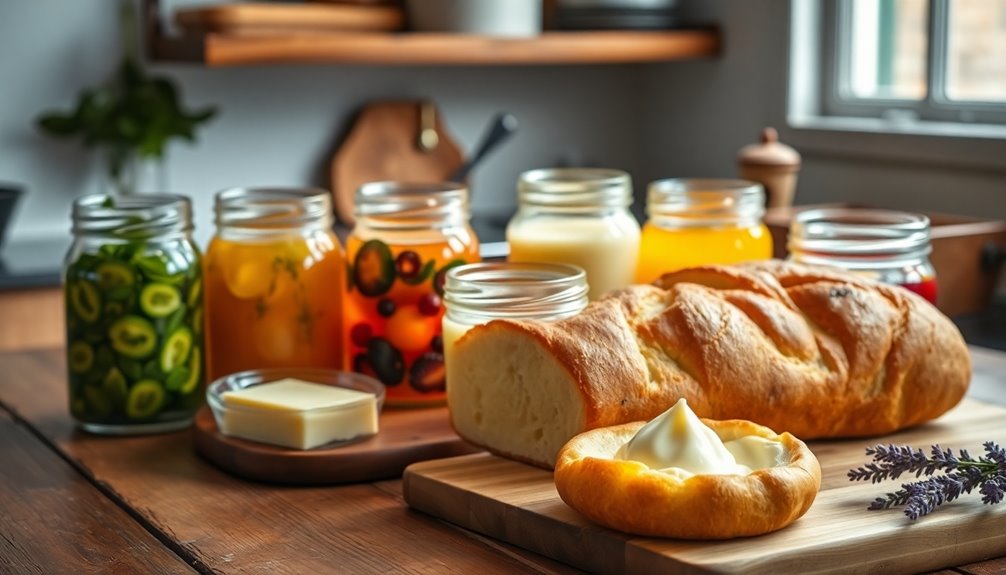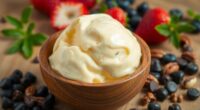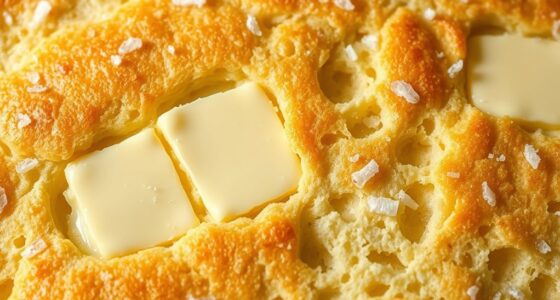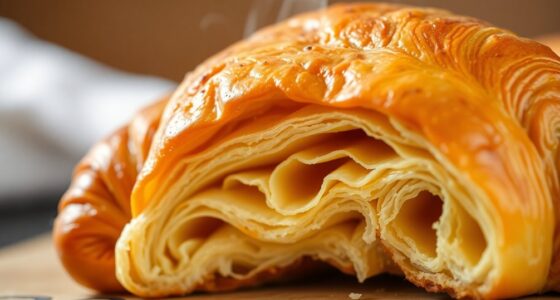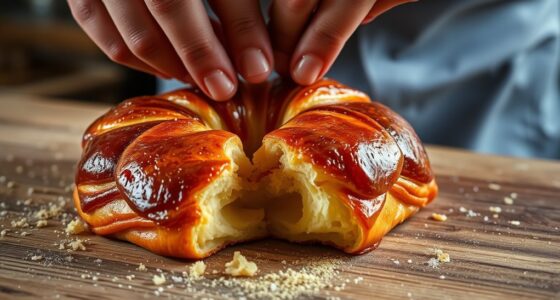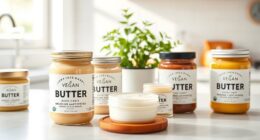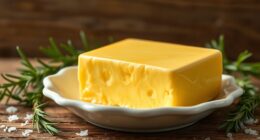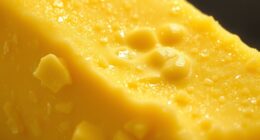Infused butters can elevate your bread and pastry game by adding unique flavors and enhancing overall taste. By infusing butter with ingredients like fresh herbs and citrus zest, you can create custom blends that enrich your baking. Incorporate that infused butter into batters for a light and fluffy texture, making your baked goods truly special. Experimenting with various combinations might just inspire your next masterpiece, and there's plenty more to explore in the world of infused butters.
Key Takeaways
- Infused butters enhance the flavor profile of baked goods, adding unique aromatic notes that elevate breads and pastries.
- The infusion process extracts fat-soluble compounds, enriching the taste and offering customization with ingredients like herbs and citrus zest.
- Room temperature infused butter creates a light and fluffy texture when creamed with sugar, essential for successful baking.
- Experimenting with different herb and spice combinations can yield innovative flavors, allowing for creative baking adventures.
- A simple lemon glaze drizzled over baked goods complements herbal notes, providing a sweet finish that enhances the overall experience.
History
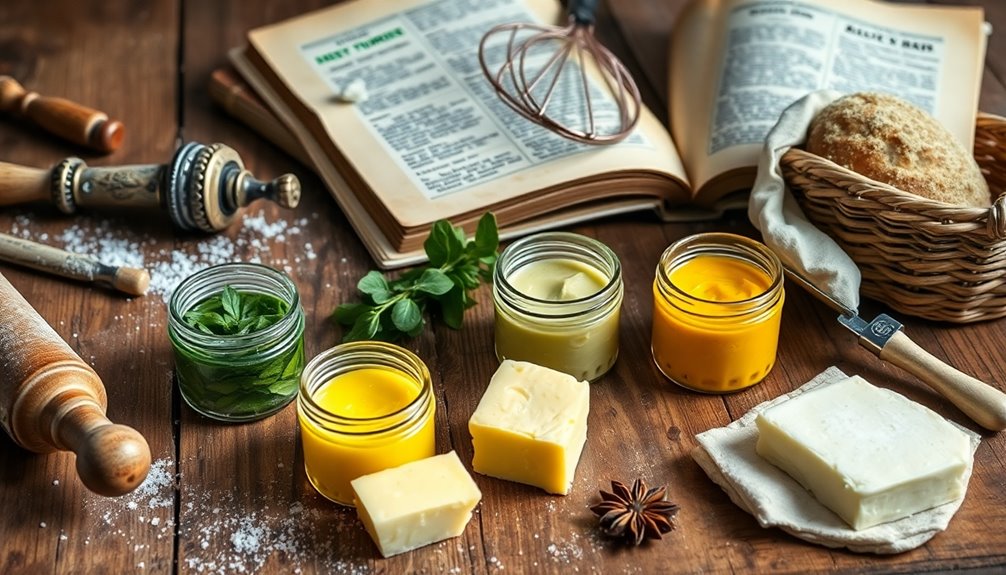
Infused butters have a rich history that dates back to ancient civilizations, where flavored fats were used not just for cooking but also for medicinal purposes.
In the 19th century, French cuisine popularized the technique of beurre composé, or compound butter, allowing chefs to enhance their dishes with various flavors. This innovation paved the way for modern uses of flavored butter in baking, adding depth to pastries and breads.
Throughout the 20th century, the trend of infused butters spread globally, inspiring countless flavor combinations across various cuisines. Today, you can celebrate this tradition in your own kitchen by experimenting with herbs, spices, and other aromatics, transforming everyday recipes into gourmet experiences with infused butters. Butter's role in culinary traditions has evolved, reflecting cultural significance and versatility in cooking techniques.
Recipe
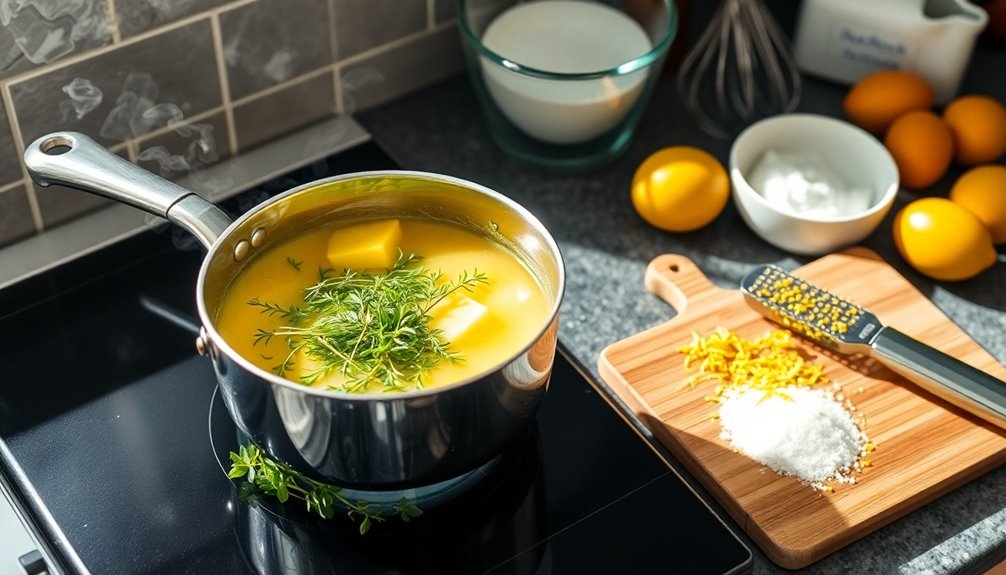
Ingredients:
- 1 cup unsalted butter
- 1/4 cup fresh thyme leaves
- Zest of 2 lemons
- 2 cups granulated sugar
- 4 large eggs
- 3 cups all-purpose flour
- 1 teaspoon baking powder
- 1/2 teaspoon salt
- 1 cup buttermilk
- 1 teaspoon vanilla extract
Instructions:
Begin by infusing the butter: In a saucepan, combine the unsalted butter, thyme leaves, and lemon zest and heat over medium-high heat for about 30 minutes.
Strain the mixture to remove the solids, and let the infused butter cool slightly.
In a large mixing bowl, cream together the infused butter and granulated sugar until light and fluffy.
Add the eggs one at a time, mixing well after each addition.
In another bowl, whisk together the flour, baking powder, and salt.
Gradually add the dry ingredients to the butter mixture, alternating with the buttermilk and vanilla extract, until everything is well combined.
Pour the batter into a greased loaf pan and bake at 350°F (175°C) for 60-70 minutes, or until a toothpick inserted in the center comes out clean.
Extra Tips:
For an even more intense flavor, consider adding a touch of lemon juice to the batter, which will enhance the citrus profile of the cake. Additionally, using herbal infusions can elevate the flavor profile of your baked goods, providing unique taste experiences.
Make sure to allow the cake to cool in the pan for about 10 minutes before transferring it to a wire rack to cool completely.
This will help maintain its moisture and prevent it from breaking apart.
For an added touch, drizzle a simple lemon glaze over the cooled cake for a sweet finish that complements the herbal notes beautifully.
Cooking Steps

To get started with your infused butter baking, preheat your oven to 350°F for optimal results.
Next, you'll add your infused butter mixture, ensuring it's well incorporated.
From there, mix in your dry ingredients before moving on to the wet ones for a perfect blend. It's important to note that butter enhances flavor and moisture in baked goods, making it a staple in pastry recipes.
Step 1. Preheat Your Oven to 350°F
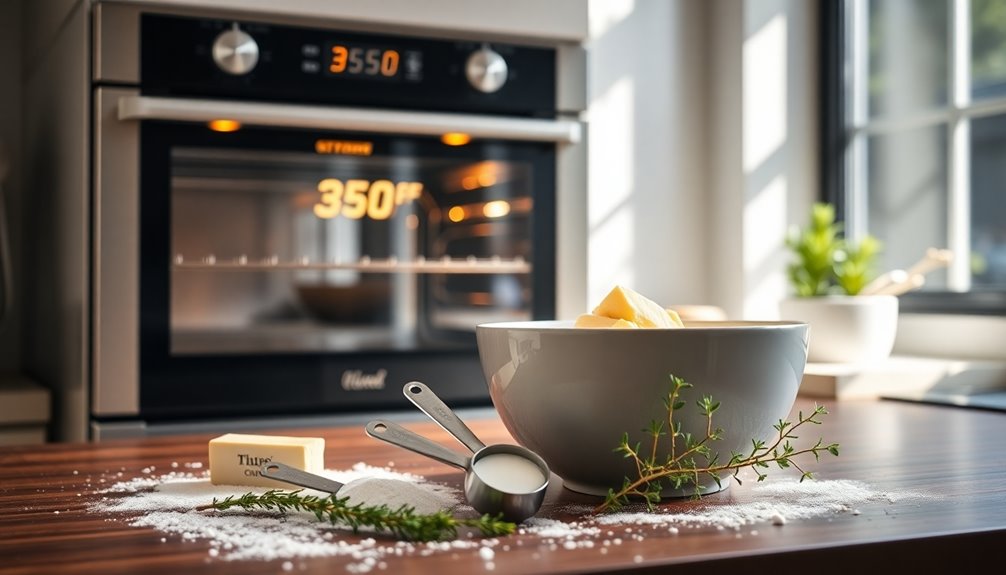
Preheating your oven to 350°F is a crucial step for successful baking. This temperature ensures an even baking environment, allowing your infused butters to melt and blend seamlessly into your dough or batter.
It usually takes about 10-15 minutes for a conventional oven to reach this temperature, so plan ahead to get your baked goods in at just the right moment. To confirm that your oven is accurately set, consider using an oven thermometer since many home ovens can vary in temperature.
Baking at 350°F is perfect for a wide range of breads and pastries, enhancing flavor without compromising texture. Consistently preheating your oven to 350°F will improve the rise and browning of your baked treats, enhancing their overall appeal. Additionally, using herb-infused butter variations can significantly transform the flavor profile of your baked goods.
Step 2. Add Infused Butter Mixture
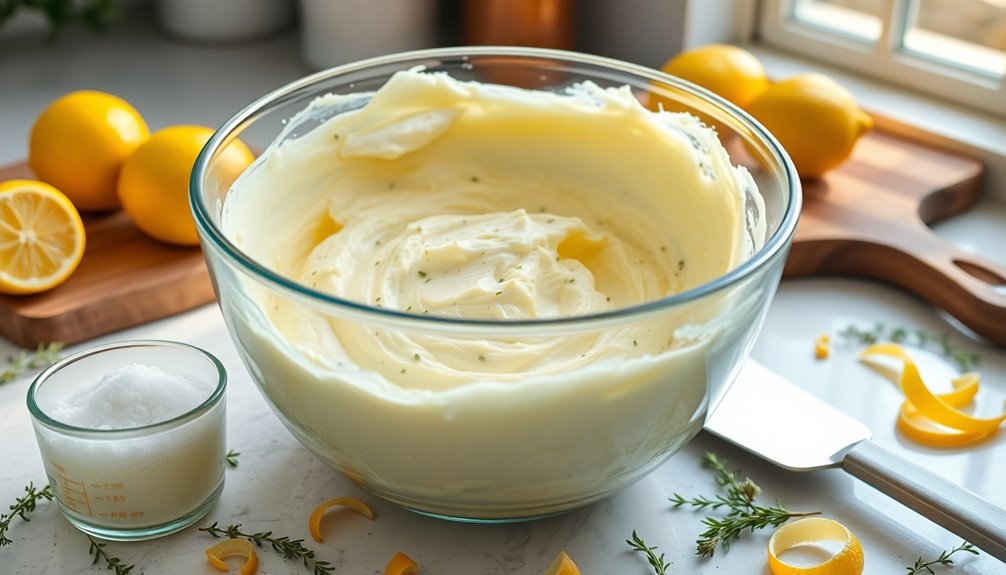
With your oven nicely preheated, it's time to add the infused butter mixture to your baking process.
First, ensure your infused butter has returned to room temperature for even distribution. Strain the butter to remove solid aromatics, leaving you with a smooth, flavorful base.
Gently mix the infused butter into your dough or batter, allowing the unique flavors to meld beautifully.
Don't hesitate to experiment with different herb and spice combinations like rosemary and garlic or cinnamon and vanilla to elevate your baked goods.
This infused butter not only enhances the flavor profile but also works wonders in recipes like pound cakes and muffins, giving them a delicious twist that'll impress everyone. Additionally, utilizing herbal infusion machines can simplify the process of creating these flavorful butters.
Enjoy the aromatic journey!
Step 3. Mix in Dry Ingredients
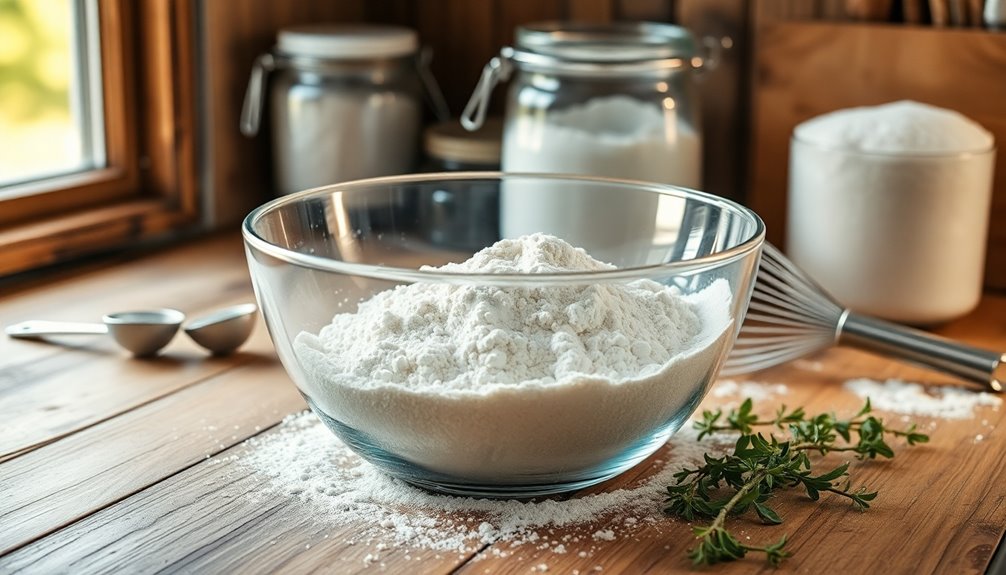
As you prepare to mix in the dry ingredients, make sure your infused butter is at room temperature for easier incorporation.
Start by sifting your dry ingredients—flour, baking powder, and spices—together to promote even distribution.
Using a stand mixer on low speed, gradually mix in the dry ingredients with the infused butter. This helps prevent flour from flying out of the bowl.
Remember to scrape down the sides of the mixing bowl regularly to ensure everything blends evenly.
Avoid overmixing; you only want to mix until just combined, as overmixing can lead to a denser final product.
This careful approach will help you achieve a smooth batter consistency, setting you up for baking success. Additionally, using color accuracy in your baking process can enhance the visual appeal of your final products.
Step 4. Fold in Wet Ingredients
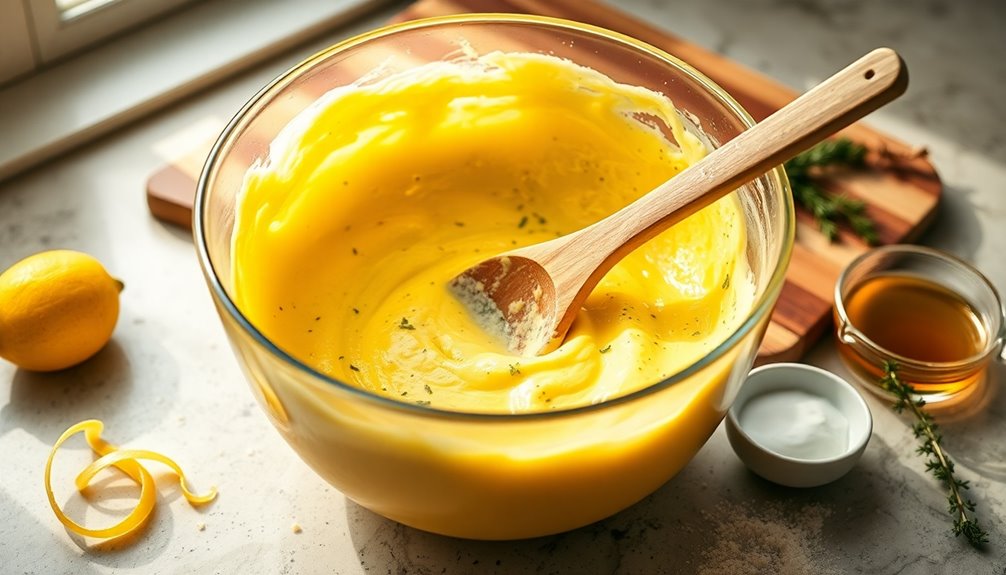
Once you've mixed in the dry ingredients, it's time to fold in the wet ingredients carefully to maintain that light texture.
Start by making a well in the center of the dry mixture. Gradually add your room temperature infused butter and sugar, ensuring it blends smoothly without melting anything else.
Using a spatula or wooden spoon, gently lift and fold the batter, incorporating the wet ingredients without overmixing. This is crucial; overmixing can lead to a dense final product.
Aim for a uniform mixture, being careful to eliminate any dry pockets of flour. Stop as soon as the wet ingredients are combined—this will ensure your baked goods have that delightful lightness you're after. Additionally, using unsalted butter can help control the salt levels in your recipe, allowing the flavors of your infused ingredients to shine through.
Step 5. Gently Knead the Dough
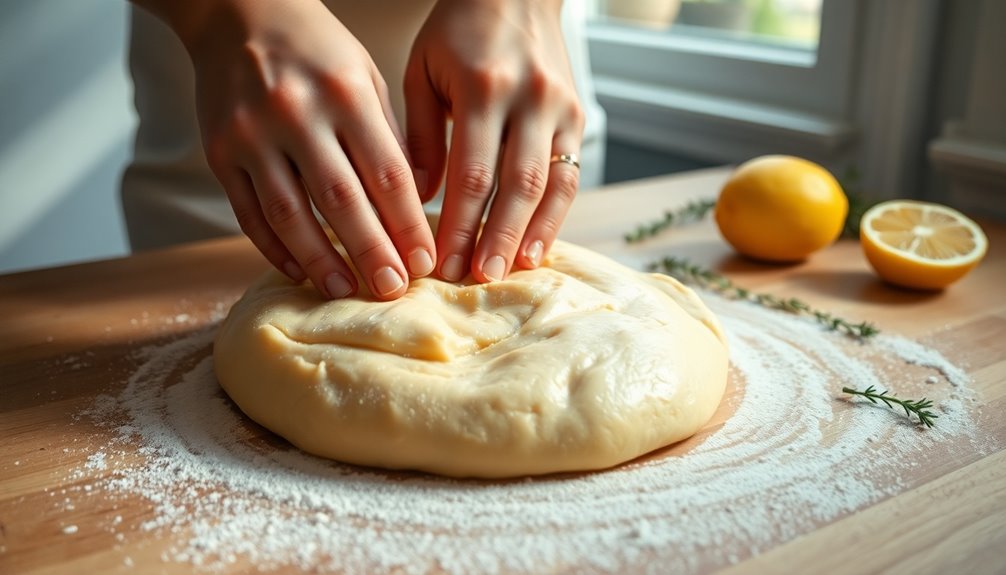
Knead the dough gently using the palms of your hands, applying just enough pressure to combine the ingredients. Avoid overworking the gluten, as this can lead to tough bread. Aim for a smooth, elastic texture by kneading for about 5-10 minutes.
During this process, incorporate infused butter into the dough to enhance flavor and moisture, resulting in a richer final product. To prevent sticking, use a light dusting of flour on your work surface, but be careful not to add too much, as it can dry out the dough. Additionally, using advanced filtration systems while baking can help reduce allergens in your kitchen environment.
After kneading, allow the dough to rest for 1-2 hours. This resting period helps relax the gluten, improving the dough's elasticity for shaping.
Enjoy the process!
Final Thoughts
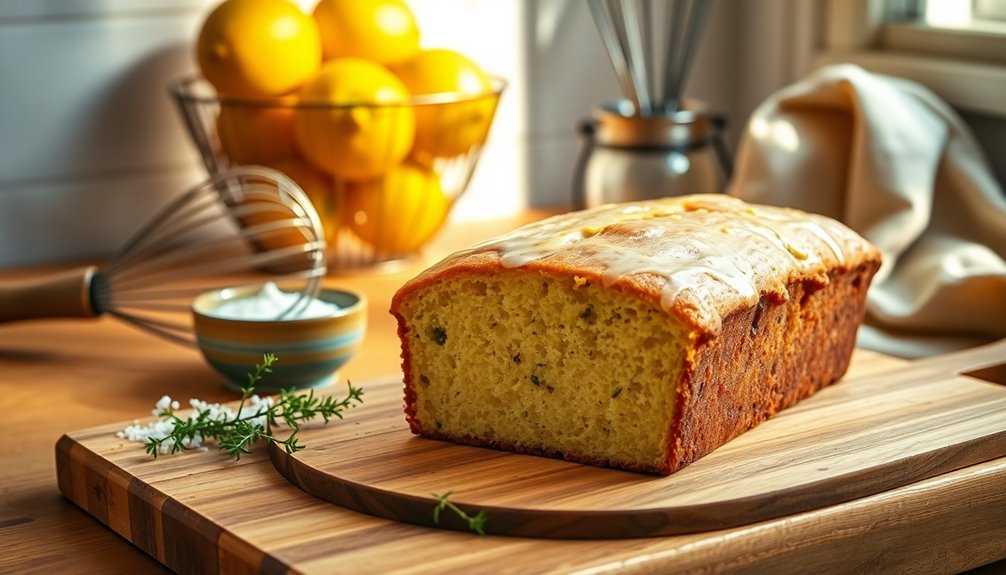
While you may already enjoy baking, incorporating infused butters can elevate your creations to a whole new level.
These butters enhance the flavor of your baked goods, thanks to the fat-soluble compounds extracted during the infusion process. From pound cakes to muffins, infused butters offer unique and aromatic profiles that enrich your overall taste experience.
You can customize them with ingredients like citrus zest or garlic, perfectly complementing different breads and pastries. Plus, when you strain the infused butter, you retain a smooth texture, making it easy to blend into your batters without changing consistency.
Check your grocery stores for fresh herbs and spices before their best by date, and get ready to transform your baking adventures! Additionally, being mindful of portion sizes is crucial to prevent excessive calorie intake while enjoying the rich flavors of infused butters.
Frequently Asked Questions
What Does Adding Butter Do in Baking?
Adding butter in baking enhances your final product's moisture, creating a tender texture that improves mouthfeel.
It acts as a flavor carrier, absorbing and amplifying other ingredients' flavors for a richer taste.
When you cream butter with sugar, it incorporates air, leading to a light, fluffy structure.
Butter's high-fat content adds indulgence, while its melting point helps achieve a desirable crumb by producing steam, contributing to leavening and rise during baking.
What Does Butter Do to Pastry?
When you use butter in pastry, it plays a crucial role in texture and flavor.
It creates steam during baking, helping layers separate and rise, which results in flakiness. The fat in butter coats flour proteins, limiting gluten formation and creating a tender crumb.
Additionally, it enriches the taste, adding a rich, creamy flavor that enhances your baked goods.
What Is the Effect of Butter in Dough?
Butter's like a magic wand in dough, transforming it into something special. It coats flour particles, keeping gluten at bay, which results in a tender texture.
You'll notice how its rich fat content elevates flavor, making every bite delightful. When you cream butter with sugar, you're infusing air, leading to a lighter, fluffier treat.
Plus, butter adds moisture, improving crumb structure and keeping your baked goods fresh longer.
What Is Baking Butter?
Baking butter is typically unsalted or sweet butter you use in recipes to add moisture, flavor, and richness to your baked goods.
If you choose European-style butter with a higher fat content, you'll create a tender texture in your treats. The quality of the butter you select plays a significant role in the final taste, so pick one you enjoy.
Remember to bring it to room temperature for the best results in your doughs.
